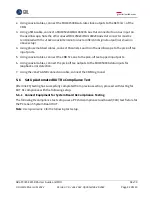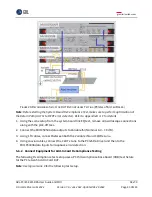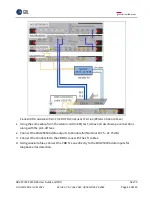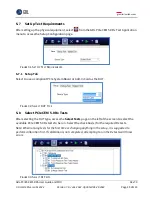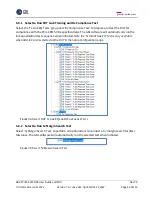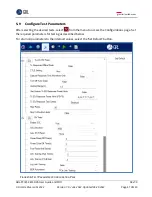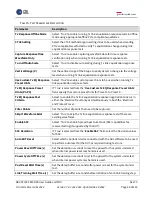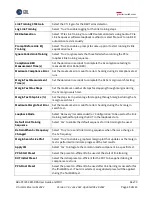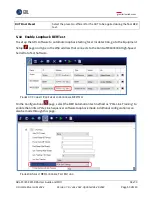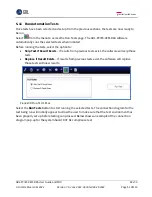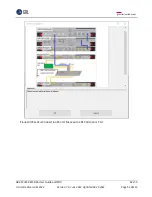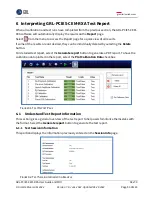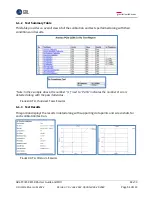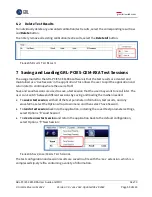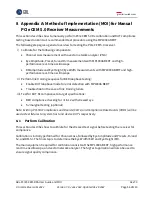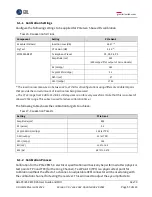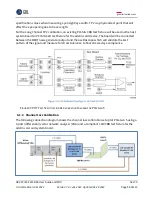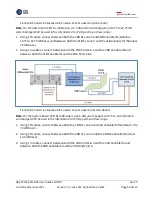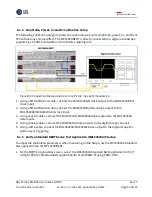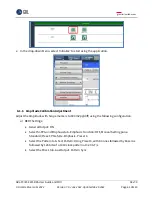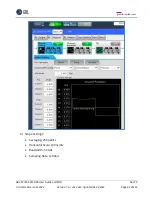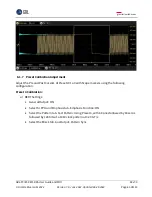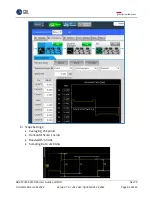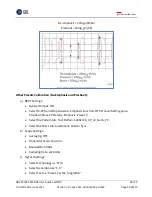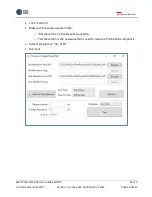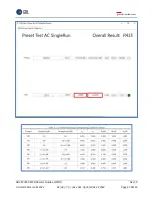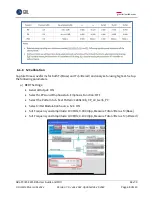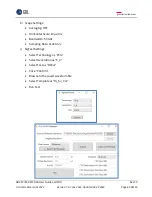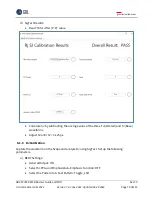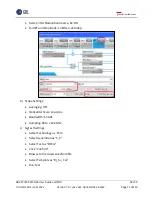
GRL-PCIE5-CEM-RXA User Guide and MOI
Rev7.0
© Granite River Labs 2022 Version 7.0, June 2022. Updated 06.29.2022
Page 56 of 123
8
Appendix A: Method of Implementation (MOI) for Manual
PCIe CEM 5.0 Receiver Measurements
This section describes how to manually perform PCIe CEM 5.0 Rx calibration and DUT compliance
testing
based on Anritsu’s recommended test proce
dure using the MP1900A BERT.
The following steps give a general overview for testing the PCIe CEM 5.0 receiver.
i)
Calibrate for the following components:
•
Channel Loss measurement with a vector network analyzer (VNA)
•
Eye Amplitude, Preset, SJ and RJ measurements with MP1900A BERT and high-
performance real-time oscilloscope
•
DM Amplitude and Eye Height/Eye Width measurements with MP1900A BERT and high-
performance real-time oscilloscope
ii)
Perform link training sequence for BER loopback testing:
•
Enable DUT loopback mode for error detection with MP1900A BERT
•
Troubleshoot in the case of link training failure
iii)
Test for DUT Rx compliance to target specifications:
•
BER compliance checking for <1E-12 with stressed eye
•
SJ marginal testing (optional)
Note: Existing PCI-
SIG Compliance Load Boards (CLB’s)
and
Compliance Base Boards (CBB’s) will be
used as test fixtures for system host and device
DUT’
s respectively.
8.1
Perform Calibration
This section describes how to calibrate for the stressed test signal before testing the receiver for
compliance.
Calibration is initially performed for Channel Loss, followed by Eye Amplitude and Presets, RJ and
SJ, and DM-SI. The final step is to determine the Eye Width (EW) and Eye Height (EH).
The main equipment required for calibration consists of the MP1900A BERT, high performance
real-time oscilloscope, and vector network analyzer. The SigTest application will also be used to
ensure signal quality compliance.

